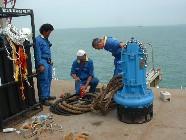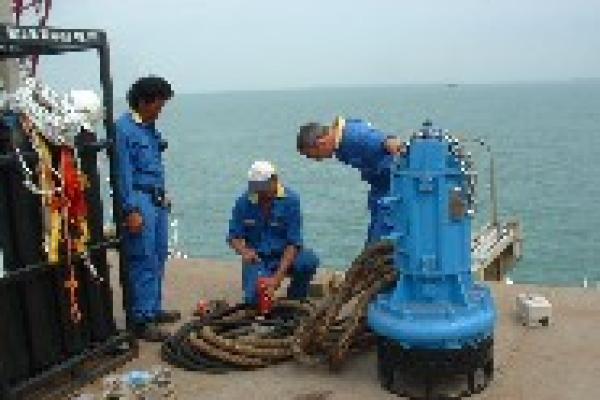
Steamship Mutual
Published: August 09, 2010
January 2007

New maritime labour standards were established at the 94th International Labour Conference last February in Geneva. Except for the four abstentions, a unanimous 314 votes were cast in favour of adopting the New Maritime Labour Convention 2006. This “super Convention” consolidates and updates more than 54 international labour standards adopted since 1920. The new Convention lays out seafarers’ rights to decent work conditions. It is meant to be easily understandable, globally applicable, readily updatable and uniformly enforceable. Primarily, the 2006 Convention provides a comprehensive charter for seafarers and shipowners. International Labour Organisation (ILO) Director-General, Juan Somavia, called it a “landmark development in the world of work”.
The 2006 Maritime Labour Convention Directive
The ILO stepped up to create the new maritime labour Convention because of a joint resolution in 2001 by the international seafarers’ and shipowners’ organisations calling for “global standards applicable to the entire industry”. The ILO was charged with developing “an instrument which brings together into a consolidated text as much of the existing body of ILO instruments as it proves possible to achieve” in order to improve the standards in regards to the needs of all maritime sector stakeholders.
Generally, the industry felt many of the existing detailed maritime Conventions were difficult for governments to ratify and enforce. The industry needed a more effective enforcement and compliance system if it wanted to eliminate sub-standard ships while creating a well-established international system for ship safety, security and environmental protection. Unlike previous labour Conventions, the new Convention sets out the basic rights of seafarers in firm statements while at the same time leaving a large measure of flexibility to ratifying countries as to how they can implement those standards for decent work with national laws.
No doubt the maritime sector and industry is extremely globalized. Countless ships travel the oceans of the world, and on them are seafarers who hail from many different countries, particularly countries with less developed economies. Over the last fifty years there has been a tremendous increase in world trade. As the shipping sector’s productivity has increased, import barriers have been reduced. This, together with better telecommunications and infrastructure have all combined to make shipping represent 90 per cent of world trade; Without shipowners and seafarers, globalization would not be as we know it today.
Consequently, it is important to set solid and uniform rules for workers, employers and governments to provide a model for commerce at sea. As an answer to current challenges that plague the maritime industry, the new Convention aims to address conditions, promote compliance and strengthen enforcement mechanisms. Most importantly, the Convention contains common sense and viable provisions to implement self enforcement. No longer will there be an array of differing national and international laws to bewilder seafarers or shipowners. For the first time, the Convention boasts, there will truly be a global foundation for national laws in the maritime labour sector.
Affected Ships and Seafarers
An estimated 1.2 million people call the sea their workplace. Until now, it was unclear who was considered a seafarer. It was uncertain whether workers not directly involved in the navigation or operation of the ship, such as most of the personnel on passenger ships, fit under this category. The new Convention now defines a seafarer as “any person who is employed, engaged or works in any capacity on board a ship that is covered by the Convention”. Although the definition clarifies the treatment of hotel workers on passenger vessels, many have criticised the definition as being unilaterally broad, given that many positions on passenger ships differ little from comparable position ashore.
Besides a few specific exclusions, the new Convention applies to all ships, publicly or privately owned, which are engaged in commercial activities. However, ships engaged in fishing, ships of traditional build (dhows and junks), warships or naval auxiliaries, or ships which exclusively navigate inland waters where port regulations apply are not covered by the new Convention. Workers on board fishing vessels will be covered in a separate proposed Convention and Recommendation set to be discussed at the International Labour Conference in 2007. Also, there are provisions to exempt smaller ships (200 gross tonnage and below) not engaged in international voyages from certain aspects of the Convention.
Ships of ratifying countries will enjoy protection against unfair competition from substandard ships and the benefits from a system of certification, thus avoiding lengthy delays related to inspections in foreign ports. Ships will not be placed at a disadvantage because their country has ratified the new Convention. Under the provisions of the Convention, ships of all countries irrespective of ratification are subject to inspection in any country that has ratified the Convention. Ships that do not meet the minimum standard of the new Convention may face possible detention.
Multilateral System Co-operation
To set the mood for the rest of the Convention provisions, the first Article requires member States to co-operate with each other in order to facilitate effective implementation and enforcement. This translates into co-operation between countries, international organisations, shipowners, seafarers, organisations and other non-governmental organisations. First and foremost, the Convention is designed to work seamlessly with the established systems of the International Maritime Organisations (IMO).
Main Elements of the Maritime Labour Convention
Often maritime enterprises find themselves fighting to survive and grow amidst intense competition in domestic, regional and global markets. Consequently, workers feel that the competitive tension is transferred onto them. Until recently, labour standards in the maritime sector have been fragmented in content and application. The new Convention sets out in plain language a seafarer’s “Bill of Rights”. The reason is that the ILO recognised that poor working conditions and quality shipping do not mix well. Although the Convention provisions define clear rights, it also gives nations discretion to deliver those rights.
“We believe that the agreement we have concluded will make a significant contribution to ensuring decent work at sea and making a real difference to the lives and life changes of many of the world’s seafarers”, said Brian Orrell, Seafarer Vice-President of the Conference from the United Kingdom. Essentially, the Convention establishes minimum requirements to allow seafarers to work on a ship. Compared to previous Conventions, the 2006 Convention contains several novel features. The whole structure of the new Convention differs from that of traditional ILO Conventions. The Convention departs from past provisions by including conditions of employment accommodations, recreational facilities, food and catering, health protection, medical care, welfare and social security protection.
To encourage compliance by operators and owners as well as strengthen enforcement, the new Convention seeks to set mechanisms at all levels. These levels include provisions for onboard and onshore complaint procedures for seafarers regarding the shipowners’ and shipmasters’ supervision of conditions on their ships, port State inspection, and flag Stages’ jurisdiction and control over ships.
Ships larger than 500 GT engaged in international voyages will be required to carry a “Maritime Labour Certificate” and a “Declaration of Maritime Labour Compliance”. The Declaration outlines shipowners’ plans for ensuring applicable national laws and regulations necessary to carry out the provisions of the Convention. It is essential that the plans are complied with on an ongoing basis. Therefore, shipmasters will be responsible for carrying out the stated plans and keeping proper records to provide evidence of compliance with the Convention. Flag States are charged with reviewing the shipowners’ plans as well as verifying and certifying that they are in place and being implemented. Shipowners who disregard the law will be pressured instead of transferring the burden to compliant shipowners.
Although the new Convention is more flexible, its standards are not lower than existing maritime labour standards. Current standards are maintained while countries are given greater discretion to establish national laws facilitating protection. “What is fundamentally different about this Convention is that it is about quality shipping” said Bruce Cariton of the United States, who chaired the Committee of the Whole. “Beyond improving the working conditions of the seafarers, it is also about further marginalising the bad shipowners who end up costing the entire industry. This is a very sound economic benefit for the entire industry”.
Additionally, the Convention includes innovative features such as accelerated amendment procedures to update its technical provisions to address changes in the sector. Thus, the Convention will stay more up to date than existing Conventions. Amendments are made under an accelerated procedure enabling changes to come into effect within three to four years from when they are proposed. There will be onboard and onshore complaint procedures to encourage rapid resolution of problems. Possibly, the complaint and inspection system will be linked with the well established ILO supervisory system. Also, there are provisions ensuring that if a flag State delegates certain inspection and enforcement functions to a recognised organisation, such as a classification society, the organisation will have to meet specific criteria for independence and expertise. Moreover, the Convention promises to foster modernised management based on an approach to occupational safety and health. Simply put, the Convention is unique because it has “teeth”. It is structured to stay in tune with the needs of the industry, ensure universal application and enforcement of provisions, and above all meet the demands for quality shipping.
“It may have seemed a long road, but we have got to the end of it and we have made history”, Dierk Lindemann, Conference Vice-President for the Shipowners from Germany said. “We now have a single maritime Labour Standards Convention embracing virtually all we need in order to establish a uniform and acceptable regime for the world’s seafarers.”
Conclusion
Success of the new Convention depends largely on worldwide acceptance. The Convention provisions only come into force 12 months after being ratified by at least 30 ILO member States that have a total share of 30% of the world gross tonnage. Therefore, for the Convention to come into effect quickly, States with significant shipping fleets will need to ratify it first. However, an early ratification is expected because the prospects for ratification were an integral part of the discussions in Geneva. Expressed concerns were addressed during the development of the instrument. Countries that ratify the new Convention will no longer be bound by existing Conventions. Those that do not ratify the new Convention will remain bound by the Conventions that have ratified, but now those Conventions will be closed to further ratification.
Ratification will raise the Convention as the “fourth pillar” of international maritime regulatory regimen, alongside three key IMO Conventions: the International Convention for the Safety of Life at Sea (SOLAS), the Standards of Training, Certification and Watchkeeping Convention (STCW) and the International Convention for the Prevention of Pollution from Ships (MARPOL).
With thanks to Larry Kaye, Kaye Rose and Partners, San Diego, for preparing this article.


